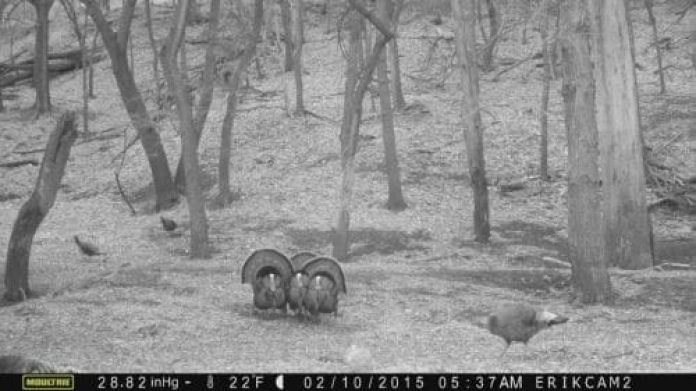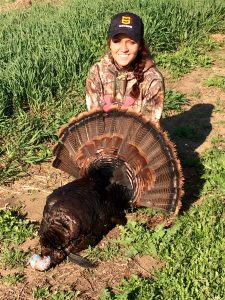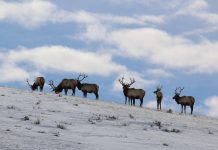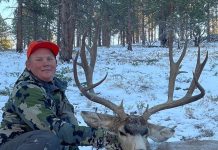
Written by: Samantha Brakke
The cool, crisp mid-November mornings awaken with the rising sun from a tree stand in the heartland of America. You hope for that rut-crazy giant to wander by your stand, for a doe to stroll by, tongue out, with the chase full on. Though we all dream of mornings like these, not every sit is equally active. It may sound crazy, but always keep a Plan B on the slow days, even if it is not the species, or even the season, of what you are pursuing.
Scouting by Mistake?
It is a well-known fact that whitetails and wild turkeys roam the same areas. Hunters often get so caught up focusing on the rut, the kill, and the impossible buck that they completely block all other things. I know there are numerous hunters out there that have seen wild turkeys afield while whitetail hunting. Did anybody think, “I could use these sightings to help with my upcoming spring season?” or do most of us simply forget about the encounter, or miss it completely? Something as simple as listening in the pre-dawn hours to raspy hens from the roost, or flapping wings as the sun sets, can pay dividends come spring. Don’t get me wrong, deer seem to come in as ghosts more times than not, and full attention is needed on those hunts. But some of these simple tips may lead to an opening day kill of that Tom of a lifetime.
From Roost to Patterns
Wintering turkeys are very similar to pre-rut and summering deer and elk. Toms will group together in bachelor groups like bucks or bulls. Jakes will be right alongside the hens just like spikes. They seem to avoid each other during this time period to focus on feeding. It is exceedingly easier to find roosting hens during the fall/winter than in the spring. The Jakes will be roosting in the same core area as the hens. Toms seem to want nothing to do with hens or Jakes and are quite nomadic on their roosts. They will roost together but may change their roost come spring. All in all, their focus is on food sources. By knowing which fields are a consistent favorite you can gain knowledge of where they will be in the spring. Animals are creatures of habits and will go to the best meal available. While you are out shed hunting, if you notice a string of “scrapes” which look like several bucks were in frenzy, remember that location. Turkeys will claw under the leaves to find bugs and that is an easy sign they were recently in the area.
Early Spring
A tool that many turkey hunters overlook are trail cameras. Trail cameras allow big game hunters to scout when they are not present. By knowing the general vicinity where they roost, finding the Toms will come hand in hand. Searching for fields where they will fly down out of their roost to soak up the early morning sun will eventually lead to Toms as well. Along with the previously mentioned clawing of the leaves, setting up a camera on these points is a game changer. I have caught several turkey fights on camera as hens watch in the distance. These fights lead to feathers that are left as a priceless sign. Knowing where this takes place will help with opening day, and the trail cameras will help you know when they are coming down from their roost, how long they are in the area, and the caliber of the Toms. As the turkey “rut” progresses, much like a herd of elk, small harems will start breaking the large flocks into smaller hen groups.

The hens will still be roosting in their same general vicinity that they are used to, but they may spread apart due to dominance within the hen groups as well. Like all mating seasons, if you find the females, the males aren’t far behind. By knowing the hen’s core roosting area finding an opening day Tom may become that much easier. Scouting pays an enormous role for us DIY, public land hunters. Instead of chasing that non-responsive Tom through the woods learn to be there when they are present. If you are in a position knowing exactly where they want to go based on your prior work, calling may not be necessary at all. Just be ready, and make the first chance count!














